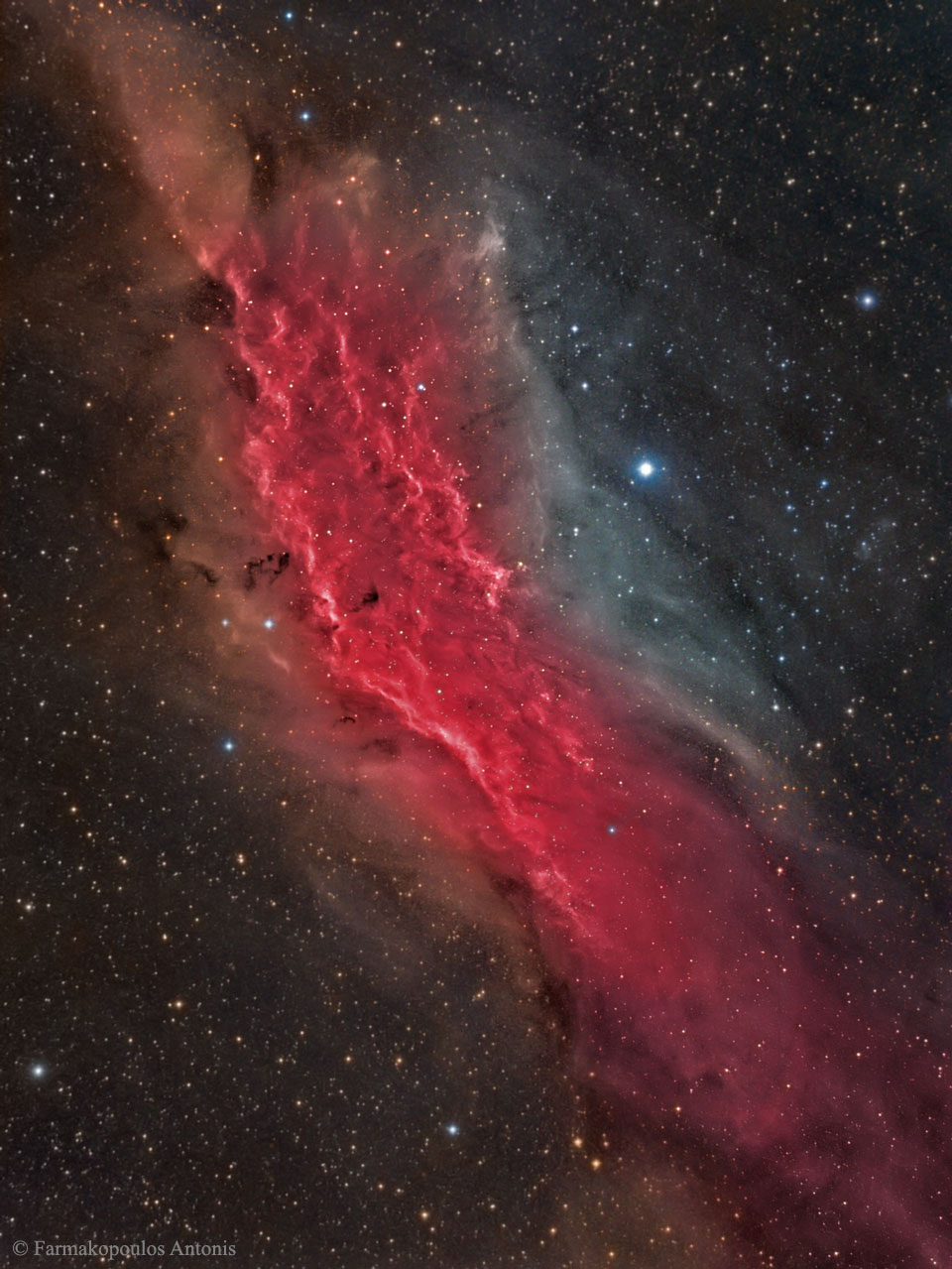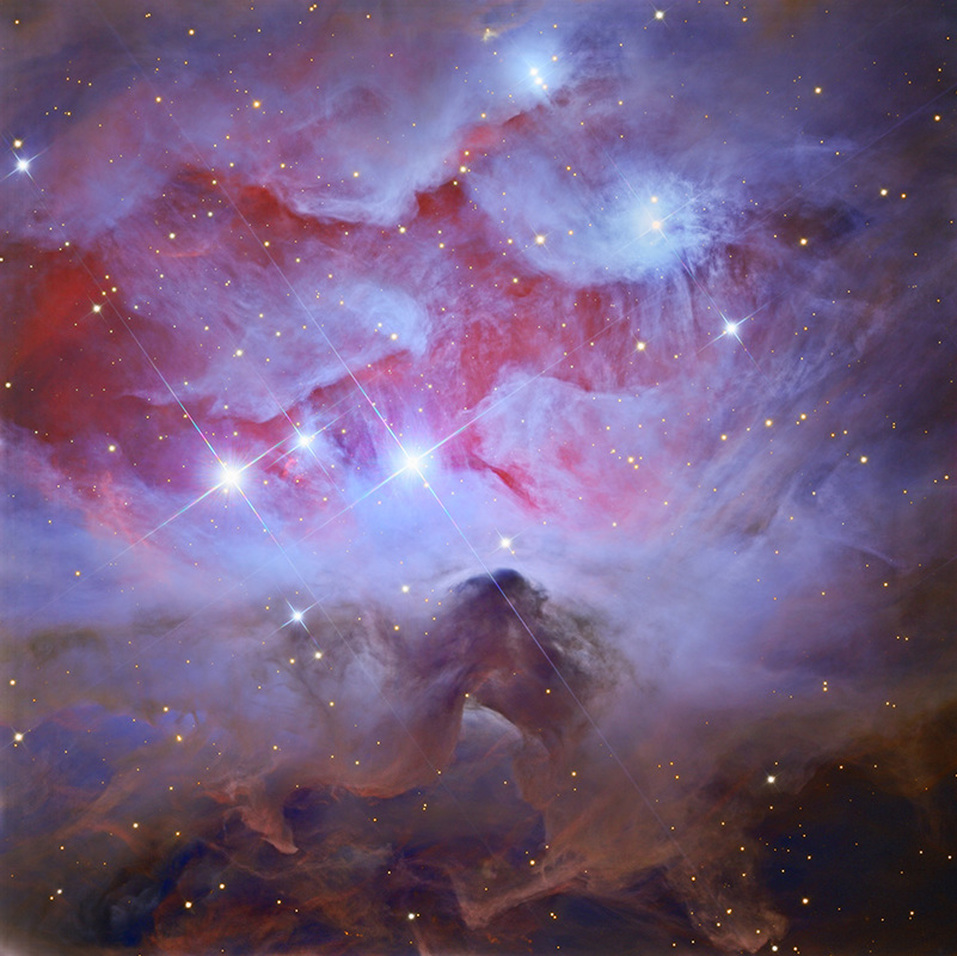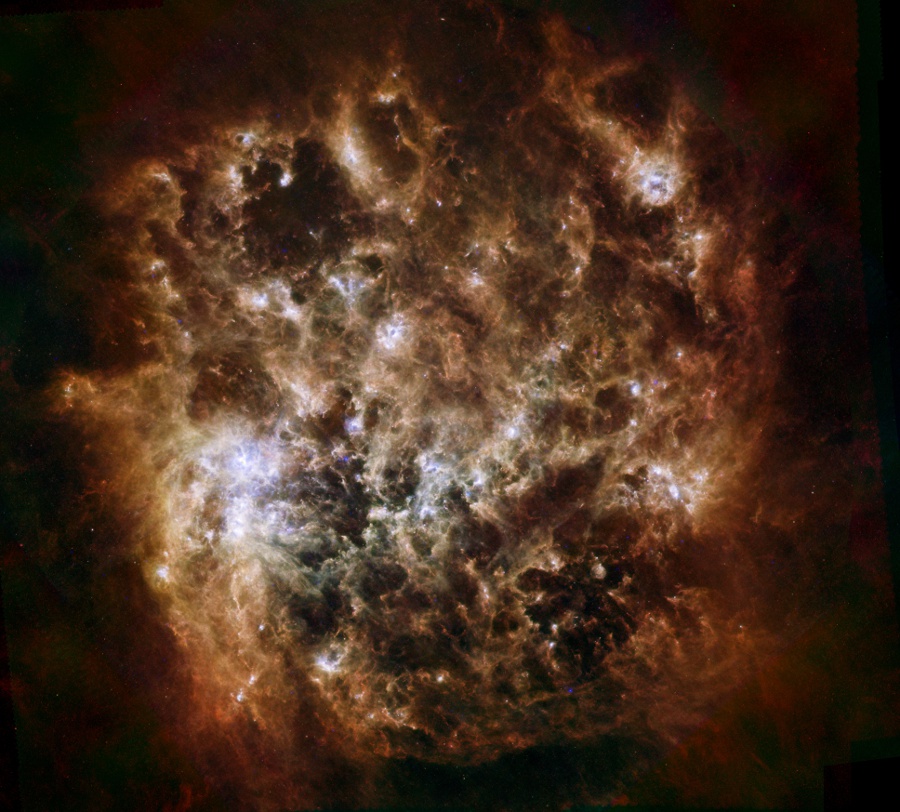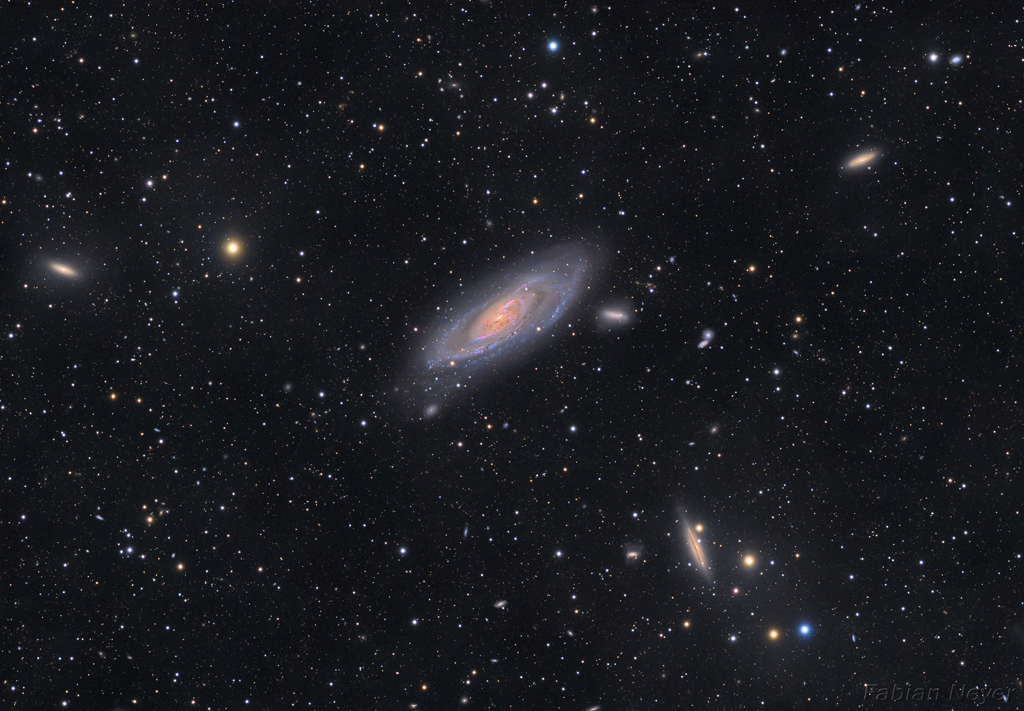Nice pic!!
 |
 |
|
|||||||||||
 |
 |
||||||||||||
|
|
|
|
|
|
|
||||||||
 |
|
|
|
|
|
 |
|||||||
|
|
|
|
|||||||||||
|
|
|||||||||||||
|
|
|
|
|
|
|
|
|
|
|
|
|
|
|
Results 401 to 410 of 528
Thread: Space Pics v.3
-
01-06-2016, 02:58 PM #401Pinball Wizard












- Join Date
- Nov 2014
- Location
- yes
- Posts
- 9,529
- Rep Power
- 293
-
01-12-2016, 06:46 AM #402

The California Nebula
What's California doing in space? Drifting through the Orion Arm of the spiral Milky Way Galaxy, this cosmic cloud by chance echoes the outline of California on the west coast of the United States. Our own Sun also lies within the Milky Way's Orion Arm, only about 1,500 light-years from the California Nebula. Also known as NGC 1499, the classic emission nebula is around 100 light-years long. On the featured image, the most prominent glow of the California Nebula is the red light characteristic of hydrogen atoms recombining with long lost electrons, stripped away (ionized) by energetic starlight. The star most likely providing the energetic starlight that ionizes much of the nebular gas is the bright, hot, bluish Xi Persei just to the right of the nebula. A regular target for astrophotographers, the California Nebula can be spotted with a wide-field telescope under a dark sky toward the constellation of Perseus, not far from the Pleiades.
Image Credit & Copyright: Farmakopoulos AntonisI gather darkness to please me...
-
01-12-2016, 06:48 AM #403
what's California doing in space?
 I must not forget, we must not forget, that we are human beings.
I must not forget, we must not forget, that we are human beings.
- Ren
-
01-14-2016, 03:41 AM #404

Reflections on the 1970s
The 1970s are sometimes ignored by astronomers, like this beautiful grouping of reflection nebulae in Orion - NGC 1977, NGC 1975, and NGC 1973 - usually overlooked in favor of the substantial glow from the nearby stellar nursery better known as the Orion Nebula. Found along Orion's sword just north of the bright Orion Nebula complex, these reflection nebulae are also associated with Orion's giant molecular cloud about 1,500 light-years away, but are dominated by the characteristic blue color of interstellar dust reflecting light from hot young stars. In this sharp color image a portion of the Orion Nebula appears along the bottom border with the cluster of reflection nebulae at picture center. NGC 1977 stretches across the field just below center, separated from NGC 1973 (above right) and NGC 1975 (above left) by dark regions laced with faint red emission from hydrogen atoms. Taken together, the dark regions suggest to many the shape of a running man.
Image Credit & Copyright: Adam Block, Mt. Lemmon SkyCenter, Univ. ArizonaI gather darkness to please me...
-
01-15-2016, 06:19 AM #405

Infrared Portrait of the Large Magellanic Cloud
Cosmic dust clouds ripple across this infrared portrait of our Milky Way's satellite galaxy, the Large Magellanic Cloud. In fact, the remarkable composite image from the Herschel Space Observatory and the Spitzer Space Telescope show that dust clouds fill this neighboring dwarf galaxy, much like dust along the plane of the Milky Way itself. The dust temperatures tend to trace star forming activity. Spitzer data in blue hues indicate warm dust heated by young stars. Herschel's instruments contributed the image data shown in red and green, revealing dust emission from cooler and intermediate regions where star formation is just beginning or has stopped. Dominated by dust emission, the Large Magellanic Cloud's infrared appearance is different from views in optical images. But this galaxy's well-known Tarantula Nebula still stands out, easily seen here as the brightest region to the left of center. A mere 160,000 light-years distant, the Large Cloud of Magellan is about 30,000 light-years across.
Image Credit: ESA / NASA / JPL-Caltech / STScII gather darkness to please me...
-
01-16-2016, 05:16 AM #406

The View Toward M106
A big, bright, beautiful spiral, Messier 106 is at the center of this galaxy filled cosmic vista. The two degree wide telescopic field of view looks toward the well-trained constellation Canes Venatici, near the handle of the Big Dipper. Also known as NGC 4258, M106 is about 80,000 light-years across and 23.5 million light-years away, the largest member of the Canes II galaxy group. For a far away galaxy, the distance to M106 is well-known in part because it can be directly measured by tracking this galaxy's remarkable maser, or microwave laser emission. Very rare but naturally occuring, the maser emission is produced by water molecules in molecular clouds orbiting its active galactic nucleus. Another prominent spiral galaxy on the scene, viewed nearly edge-on, is NGC 4217 below and right of M106. The distance to NGC 4217 is much less well-known, estimated to be about 60 million light-years.
Image Credit & Copyright: Fabian NeyerI gather darkness to please me...
-
01-16-2016, 05:28 AM #407
good one, Capn...
"This is my rifle, this is my gun, one is for shooting the other for fun"...Army marching cadence
-
01-16-2016, 05:55 AM #408Pinball Wizard












- Join Date
- Nov 2014
- Location
- yes
- Posts
- 9,529
- Rep Power
- 293
Only 60 Million light years, a skip and hop away!!!We need warp speed

-
01-17-2016, 08:27 AM #409

The Galactic Center in Infrared
The center of our Galaxy is a busy place. In visible light, much of the Galactic Center is obscured by opaque dust. In infrared light, however, dust glows more and obscures less, allowing nearly one million stars to be recorded in the featured photograph. The Galactic Center itself appears on the left and is located about 30,000 light years away towards the constellation of the Archer (Sagittarius). The Galactic Plane of our Milky Way Galaxy, the plane in which the Sun orbits, is identifiable by the dark diagonal dust lane. The absorbing dust grains are created in the atmospheres of cool red-giant stars and grow in molecular clouds. The region directly surrounding the Galactic Center glows brightly in radio and high-energy radiation, and is thought to house a large black hole.
Image Credit: 2MASS Project, UMass, IPAC/Caltech, NSF, NASAI gather darkness to please me...
-
01-17-2016, 03:29 PM #410
Cool.........
Two of the greatest qualities
to have in live are:
PATIENCE
and
WISDOM
Similar Threads
-
RCU model pics
By crazed 9.6 in forum BuzzTV RemotesReplies: 25Last Post: 01-05-2024, 10:41 PM -
BuzzTV e1 - pics
By Ryu in forum BuzzTV EssentialsReplies: 0Last Post: 02-01-2021, 01:06 AM -
Zx Pics
By Capt.Kangaroo in forum Formuler ZxReplies: 17Last Post: 09-21-2018, 02:38 PM -
Space News/UFO's Etc...(Discussion/Pics/Vids)
By Capt.Kangaroo in forum Deep SpaceReplies: 678Last Post: 05-10-2018, 12:27 PM -
This is cool pics
By Marley in forum Chit Chat LoungeReplies: 0Last Post: 03-06-2018, 06:41 PM



 Reply With Quote
Reply With Quote



